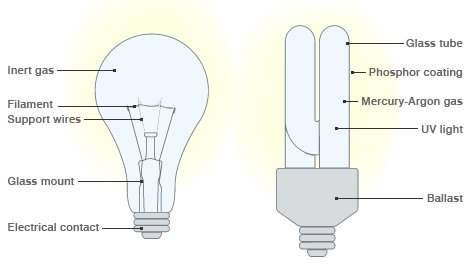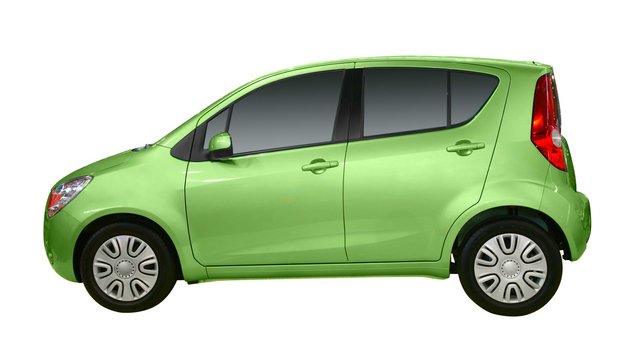The Science Behind Eco-Friendly Light Bulbs: How They Work
Today we discuss the Science Behind Eco-Friendly Light Bulbs. You may have heard the buzz about eco-friendly light bulbs and wondered, “How do they actually work?” Well, the answer lies in their energy-saving technology.
These innovative light bulbs are designed to minimize energy consumption while producing the same amount of light as traditional bulbs. By utilizing advanced LED or CFL (compact fluorescent) technology, eco-friendly light bulbs convert electrical energy into visible light with remarkable efficiency.
Not only do they help save money on electricity bills, but they also contribute to a greener environment by reducing greenhouse gas emissions. So, let’s dive deeper into how these eco-friendly light bulbs work and why they are a bright choice for a sustainable future.
How Do Eco-Friendly Light Bulbs Work?
Eco-friendly light bulbs, also known as energy-efficient bulbs, are designed to decrease energy consumption and reduce environmental impact while providing adequate lighting. These bulbs have gained popularity due to their long lifespan and lower energy requirements compared to traditional incandescent bulbs. This article will delve into the inner workings of eco-friendly light bulbs, explaining the technology behind them and their various types.
1. LED Technology
LED (Light Emitting Diode) technology lies at the heart of eco-friendly light bulbs. LEDs are semiconductors that produce light when an electric current passes through them. This technology offers numerous advantages, including energy efficiency, durability, and versatility.
How LEDs Produce Light:
When an electric current flows through an LED, electrons recombine with electron holes within the semiconductor material, releasing energy in the form of photons. The color of the light emitted depends on the materials used in the LED’s construction.
Energy Efficiency of LEDs:
One of the main advantages of LEDs is their exceptional energy efficiency. Unlike incandescent bulbs, which emit light by heating a filament, LEDs convert most of their energy into light rather than heat. This efficient conversion results in less wasted energy, making LEDs more environmentally friendly.
Durability and Longevity:
LEDs are highly durable and long-lasting. They can withstand shock, vibrations, and extreme temperatures, making them ideal for a wide range of applications. LED bulbs can last up to 25 times longer than traditional incandescent bulbs, reducing the frequency of replacements and saving resources.
2. Compact Fluorescent Lamps (CFL)
CFL bulbs are another popular type of eco-friendly lighting. They utilize a different technology known as fluorescent lighting, which offers a higher level of energy efficiency compared to incandescent bulbs.
How CFL Bulbs Work:
CFL bulbs contain a mix of argon and mercury vapor within a glass tube. When an electric current passes through the tube, it excites the mercury atoms, causing them to emit ultraviolet (UV) light. This UV light then interacts with the phosphor coating inside the tube, producing visible light.
Energy Efficiency of CFL Bulbs:
CFL bulbs are substantially more energy-efficient than incandescent bulbs. They require approximately 70% less energy to produce the same amount of light. This efficiency translates into significant energy savings and reduced electricity bills.
Warm-Up Time:
One drawback of CFL bulbs is their warm-up time. Unlike incandescent bulbs that produce instant light, CFL bulbs take a few seconds to reach their full brightness. However, advancements in technology have reduced the warm-up time, making CFL bulbs more practical for everyday use.
3. Halogen Incandescent Bulbs
Halogen incandescent bulbs are a modified version of traditional incandescent bulbs. They incorporate a halogen gas filling to enhance their energy efficiency and lifespan.
How Halogen Incandescent Bulbs Work:
Halogen bulbs work on the same principle as traditional incandescent bulbs. They consist of a tungsten filament inside a glass bulb. However, the presence of a halogen gas (such as iodine or bromine) allows these bulbs to operate at higher temperatures, leading to increased light output and efficiency.
Energy Efficiency of Halogen Incandescent Bulbs:
While halogen incandescent bulbs are more efficient than traditional incandescent bulbs, they are less energy-efficient compared to LEDs and CFLs. They typically use around 25% less energy while maintaining similar light output. However, they are still considered a step towards more eco-friendly lighting.
4. Benefits of Eco-Friendly Light Bulbs
Switching to eco-friendly light bulbs offers several advantages for both individuals and the environment. Some notable benefits include:
Energy Savings
Eco-friendly light bulbs consume less energy, resulting in reduced electricity bills. LED bulbs, in particular, can save up to 80% more energy compared to incandescent bulbs.
Environmentally Friendly
By reducing energy consumption, eco-friendly light bulbs contribute to a lower carbon footprint. They help combat climate change by decreasing greenhouse gas emissions associated with electricity production.
Longevity and Cost Savings
LED and CFL bulbs have significantly longer lifespans than traditional incandescent bulbs. This not only reduces the frequency of replacements but also results in long-term cost savings for consumers.
Versatility
Eco-friendly light bulbs come in various shapes, sizes, and color options, making them suitable for different lighting needs. They can be used in residential, commercial, and outdoor settings.
Improved Lighting Quality
LEDs provide high-quality lighting with excellent color rendering capabilities. They offer a range of color temperatures, allowing users to customize the ambiance and mood of their spaces.
5. Disposal and Recycling
When it comes to eco-friendly light bulbs, proper disposal and recycling are essential to minimize environmental impact. Different types of bulbs require specific handling due to their varying components.
LED Bulbs
LED bulbs do not contain hazardous substances and can be disposed of in regular waste. However, many recycling programs accept LED bulbs for proper recycling to extract valuable materials and reduce waste.
CFL Bulbs
CFL bulbs contain a small amount of mercury vapor, which requires special handling. They should never be thrown in regular trash. Instead, they should be taken to designated recycling centers that can safely handle and recycle the materials.
Halogen Incandescent Bulbs
Halogen incandescent bulbs can be disposed of in regular trash since they do not contain any hazardous materials. However, recycling programs might accept them to recover glass and metal components.
How Modern Light Bulbs Work
Frequently Asked Questions
How do eco-friendly light bulbs work?
Eco-friendly light bulbs, also known as energy-efficient or compact fluorescent lamps (CFLs), work by using a different mechanism than traditional incandescent bulbs. Instead of passing an electric current through a wire filament to produce light, CFLs use a combination of gas and phosphor coating. When electricity flows through the CFL, it excites the gas inside, causing it to emit ultraviolet (UV) light. The UV light then strikes the phosphor coating, which converts it into visible light. This process requires less energy, resulting in reduced electricity consumption and lower carbon emissions.
Are eco-friendly light bulbs safe to use?
Yes, eco-friendly light bulbs are safe to use. They go through rigorous testing and meet safety standards set by regulatory bodies. However, it is important to handle them with care and follow the manufacturer’s instructions. CFLs contain a small amount of mercury, which is necessary for their operation but can be harmful if the bulb breaks. In case of breakage, it is recommended to ventilate the area, avoid direct contact with the mercury, and carefully clean up the debris following specific guidelines provided by environmental agencies.
What are the benefits of using eco-friendly light bulbs?
Using eco-friendly light bulbs offers several benefits. Firstly, they are more energy-efficient, using up to 80% less energy than incandescent bulbs, resulting in lower electricity bills and reduced environmental impact. They also have a longer lifespan, lasting up to ten times longer than traditional bulbs, which means fewer replacements and less waste. Additionally, eco-friendly bulbs produce less heat, making them safer to touch and reducing the strain on cooling systems. Overall, they are a cost-effective and sustainable lighting option.
Can I use eco-friendly light bulbs in any fixture?
Most eco-friendly light bulbs are designed to fit standard light fixtures, making them compatible with a wide range of applications. However, it is essential to check the packaging or the manufacturer’s specifications to ensure compatibility with dimmer switches or specific types of fixtures. Some CFLs may not work properly with dimmers, while others may not be suitable for enclosed fixtures due to heat dissipation requirements. It is always advisable to read the instructions or consult with the manufacturer if unsure.
Do eco-friendly light bulbs take time to warm up?
Unlike older versions of energy-saving bulbs, modern eco-friendly light bulbs, especially CFLs, do not take significant time to warm up. They typically reach full brightness within a few seconds, which makes them suitable for most lighting needs. However, CFLs may be slightly slower to reach their maximum brightness in cold temperatures. If immediate full brightness is crucial for your specific application, you may consider using LED bulbs, which provide instant illumination without delay.
Final Thoughts
Eco-friendly light bulbs, also known as energy-efficient or LED bulbs, work by utilizing advanced technology to consume less energy and produce less heat compared to traditional incandescent bulbs. These bulbs use light-emitting diodes (LEDs) to convert electricity into light, reducing energy waste and greenhouse gas emissions. By incorporating eco-friendly light bulbs into our homes and businesses, we can greatly reduce our environmental impact while still enjoying bright and efficient lighting. Understanding how eco-friendly light bulbs work is essential for making informed choices towards a sustainable and energy-efficient future.

